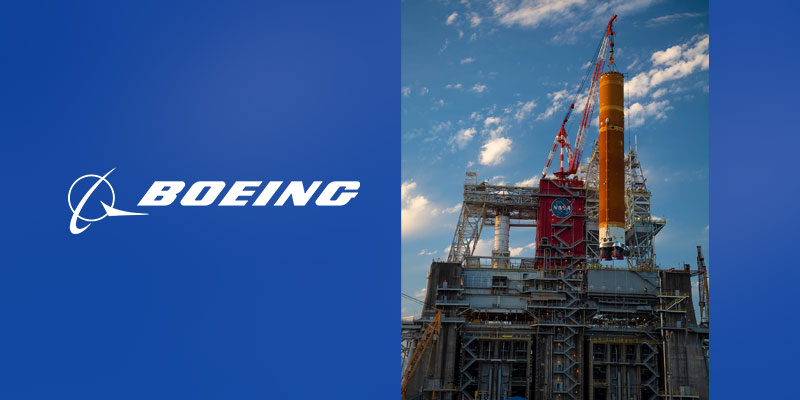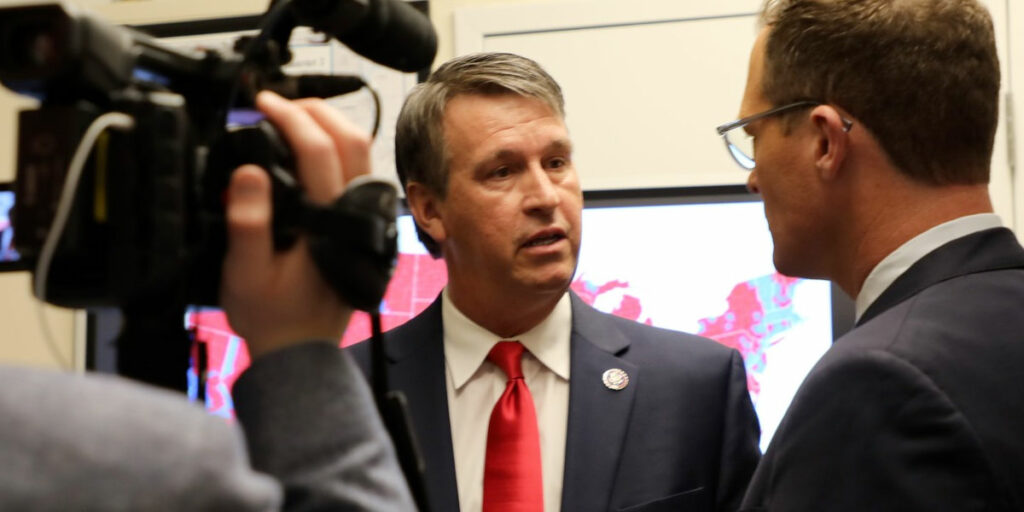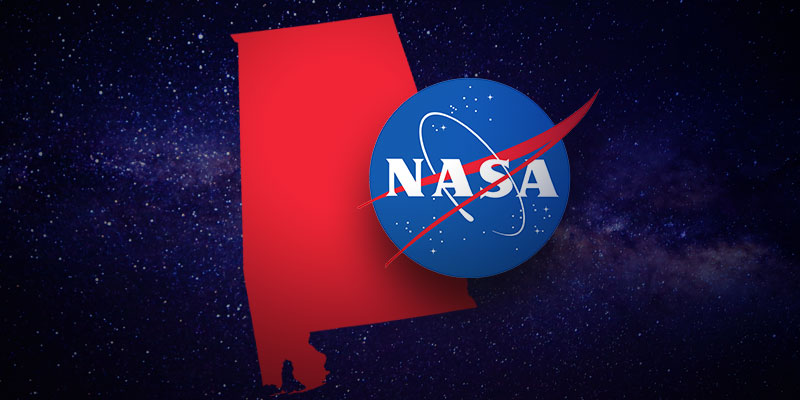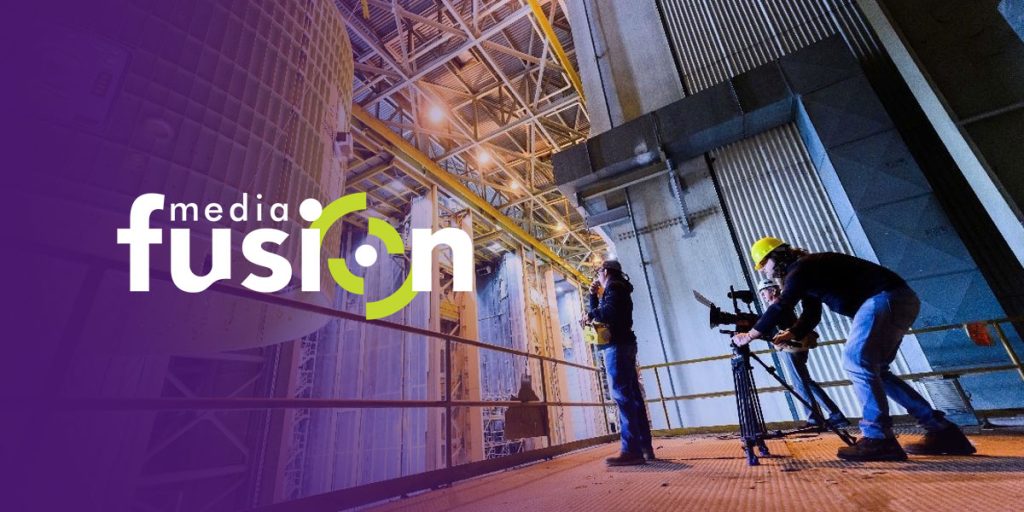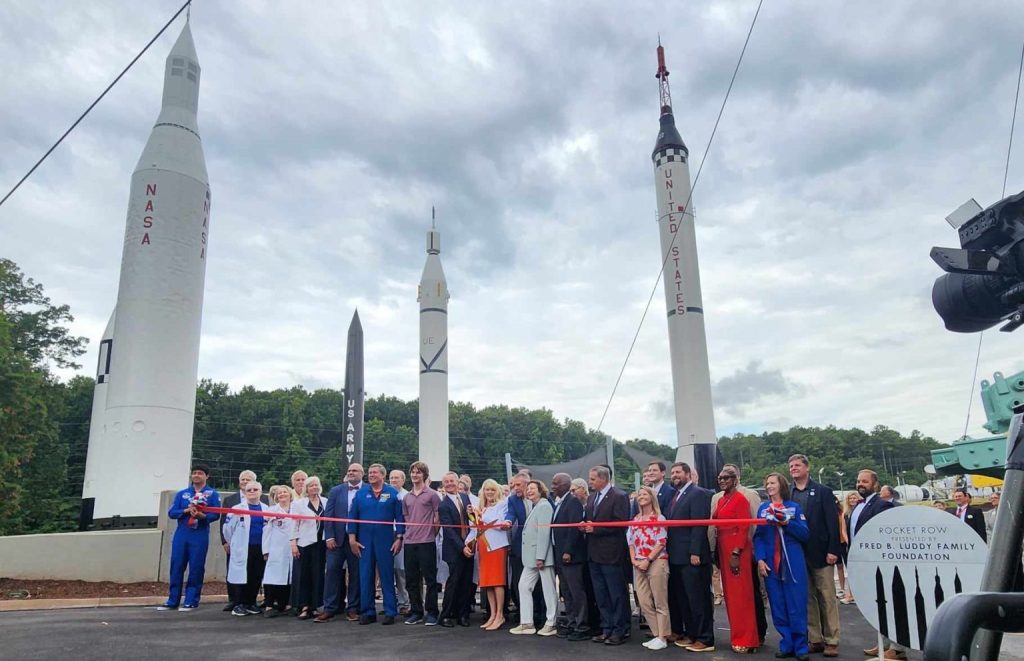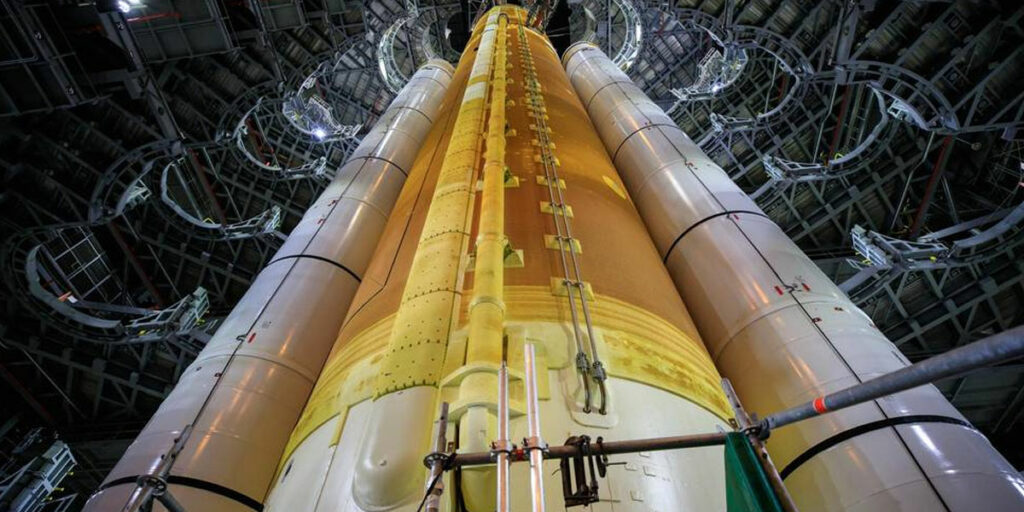Boeing on Wednesday began delivery of the Space Launch System (SLS) core stage to NASA’s Kennedy Space Center in preparation for launch of the Artemis I mission, the first moon mission in nearly 50 years.
Boeing refurbished the stage after it successfully completed hot fire testing last month at Stennis Space Center, closing out the Green Run campaign on the B-2 test stand in impressive fashion. The flight hardware will now travel to Kennedy Space Center in Florida for integration with the Orion crew spacecraft, upper stage and solid rocket boosters in preparation for launch.
SLS is the world’s most powerful ever rocket that will power America’s next-generation moon missions and subsequent crewed missions to Mars. Alabama’s aerospace industry has led the effort to build the SLS, which stands 212 feet high and 27.6 feet in diameter.
Boeing is the core stage, upper stage and avionics lead contractor, and Aerojet Rocketdyne is the RS-25 engines lead contractor. The SLS program is managed out of NASA’s Marshall Space Flight Center in Huntsville, while Boeing’s Huntsville-based Space and Launch division manages the company’s SLS work.
Simply put, SLS is the backbone of NASA’s future deep space exploration missions.
Moved from the B-2 to be delivered!
Teams have removed the 1st @NASA_SLS core stage from the iconic @NASAStennis B-2 test stand ahead of delivery for the #Artemis I lunar mission. It’s in great shape after the successful Green Run tests that helped validate its design. pic.twitter.com/LUw3Qv7pdZ
— Boeing Space (@BoeingSpace) April 21, 2021
Now, the rocket is set to launch NASA’s Artemis I mission that will send an uncrewed Orion crew vehicle around the moon and back. That test flight will be followed by Artemis II, the first crewed lunar fly-by for the Artemis program.
“We thank NASA for their partnership as we deliver the first of the Artemis core stages that will launch a new era of human deep space exploration,” stated John Shannon, SLS vice president and program manager for Boeing. “Boeing shares this achievement with the hundreds of companies and thousands of highly skilled workers who contribute to this program and form the backbone of this industry.”
The company is already joining major elements for the Artemis II core stage now at NASA’s Michoud Assembly Facility in New Orleans.
“Data from Green Run testing validated the core stage’s successful operation and will be used to help certify the stage for flight, as well as to inform our production system for future stages,” added Shannon.
Boeing also is working on evolvable capabilities for the rocket system such as the Exploration Upper Stage (EUS), which is entering production at Michoud. The more powerful SLS with EUS will be able to lift three times as much mass to deep space as any other rocket, enabling sustainable, crewed and uncrewed exploration, science and security missions. SLS’s upgraded capability to transport massive payloads in a single launch reduces mission complexity and risk while increasing safety, reliability and probability of success.
Sean Ross is the editor of Yellowhammer News. You can follow him on Twitter @sean_yhn




